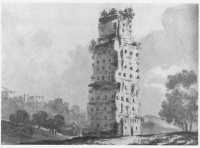Funerary art
From The Art and Popular Culture Encyclopedia
..jpg)
Photo © Jan Willem Geerinck
|
Related e |
|
Featured: |
Funerary art is any work of art forming or placed in a repository for the remains of the dead. Tomb is a general term for the repository, while grave goods are objects—other than the primary human remains—which have been placed inside. Such objects may include the personal possessions of the deceased, or objects specially created for the burial, or miniature versions of things needed in an afterlife. Our knowledge of several cultures is drawn largely from these sources.
Funerary art can serve many cultural functions, although generally they are an aesthetic attempt to capture or express the beliefs or emotions about the afterlife. It can play a role in burial rites, serve as an article for use by the dead in the afterlife, and celebrate the life and accomplishments of the dead, as part of practices of ancestor veneration. Funerary art can also function as a reminder of the mortality of humankind, as an expression of cultural values and roles, and help to propitiate the spirits of the dead, preventing their unwelcome intrusion into the affairs of the living. Many cultures have psychopomp figures, such as the Greek Hermes and Etruscan Charun, who help to conduct the spirit of the dead into the afterlife.
Funerary art goes back to the Neanderthals of over 100,000 years ago, and is known from almost all subsequent cultures—Hindu culture, which has little, is a notable exception. Many of the best known artistic creations of past cultures—from the Egyptian pyramids and the Tutankhamun treasure to the Terracotta Army surrounding the tomb of the Qin Emperor, the Mausoleum of Halicarnassus, the Sutton Hoo ship burial, and the Taj Mahal—are tombs or objects found in and around them. In most instances, specialized funeral art is mainly produced for the powerful and wealthy, although the burials of ordinary people may include simple monuments, and grave goods, usually from their possessions in life.
See also

_.jpg)

